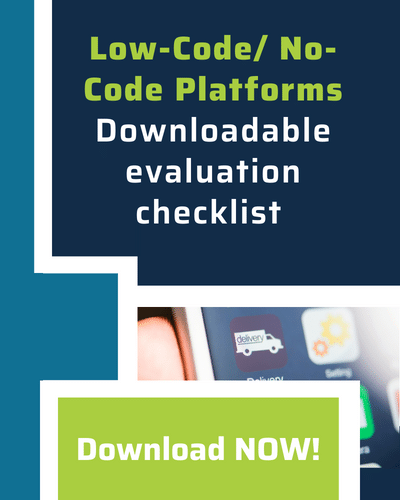During a recent podcast interview on the shape of the workplace, my host asked a telling question: “We’ve all heard about modernization and digital transformation, but what exactly is it anyway?”
Sometimes, being in the IT industry, we’re so close to our subject matter we forget that ubiquitous terms like “modernization” can mean a million things to a million businesses. If we want to truly explore what this concept means in enterprise IT environments, we have to get more specific with our terms and describe how exactly the digital modernization of systems in enterprise environments changes how people work, how business is conducted and the value it brings the organization. If we can communicate this more clearly to C-level executives, decision making will be easier even when pertaining to complex IT issues — and the adoption of solutions that can address modernization will happen that much more readily.
It’s time to get back to basics in defining what modernization can mean to CIOs looking to improve their businesses. As a developer of low-code solutions for enterprise ERP environments, I believe it means something specific. It’s taking legacy, on-premises software applications that address business processes, often written in antiquated and highly customized code, and converting them to cloud-based, mobile friendly applications that use modernized code and modern capabilities and devices. This applies to everything from mobile devices to location services, QR codes or IoT. For many enterprises, modernization translates to anything that brings their operations — or interaction with their employees, vendors and customers — to a more technologically advanced level and, in the process, potentially saves the organization money and increases productivity or efficiency.
These companies typically employ ERP, including software such as SAP, Oracle or Microsoft Dynamics to manage and automate these software systems. ERP technology is used to address departmental tasks that are mission critical to operations. What makes these enterprises unique is the customizations that have been done over the years to accommodate special processes and market or business needs that are specific to each organization. For example, a company may have a customized software platform for the accounting department and another to tackle customer records management. It might also have others for inventory management, ordering supplies, tracking the arrival of equipment, etc.
These applications often have been greatly customized, where the IT department has developed a proprietary application that’s specific to each department’s requirements. In fact, research we released from America’s SAP Users’ Group (ASUG) shows that 91% of SAP enterprise companies use customized code. These antiquated applications are often hard to maintain and update, yet they are critical to operations.
Once applications are modernized and made cloud- and mobile-ready, however, companies will gain benefits that can’t be achieved in on-premises environments. Modernization delivers a better user experience, improved efficiency, enhanced operational visibility across an organization and greater accountability. It often also provides other secondary benefits like improved workplace safety. This applies most often to large companies in asset-heavy industries like manufacturing, oil and gas, utilities, agricultural, logistics and retail, where manually transporting records through industrial settings may have physical safety risks. Due to increased efficiencies, modernization also often leads to reduced total cost of operations.
Addressing The Challenges Of Modernization
So what are the challenges of implementing modernization, and what can companies do to prepare for this shift? One of the biggest barriers is dealing with the “technical debt” that large enterprises have accumulated after years of patches and upgrades. It’s difficult to approach a redesign of systems, since making a change to one can “break” another.
We consulted with the former CIO of a global, top-five network provider on this topic, who had comments in light of how security impacts digital transformation. In an overly-customized ERP environment, he noted, when an IT department does an upgrade or a patch, they’ll often need to retest all of their customized applications to make sure they still function with the newly implemented code. Even a small change like this adds considerable time and labor to the process.
Such complications often hinder innovation. This can be minimized through a low-code modernized application, which automates much of the integration and leaves a company’s SAP (or any other ERP) core clean. This process strips away that “technical debt,” making future updates that much easier and lower-risk. To make modernization more manageable, CIOs may also want to adopt a strategy of incremental upgrades, where they prioritize what departments and business processes are most crucial to their operations and which can most immediately benefit from a transition to the cloud.
In order to prioritize and implement modernization in manageable phases, IT managers in enterprise settings should ask themselves some questions. Are they running on systems that are going out of support? Are they squeezing outdated paper or manual processes into their digital workflows? Which departments and business processes will benefit most — or most quickly — from migration to the cloud?
Does the company’s current process of creating or updating new business functions take months — or even years? Does the company’s manufacturing operations run legacy applications that are inefficient, providing an outdated user experience? Do employees on the warehouse or production floor need to travel to specific workstations to manually enter data? These are a few signs that an enterprise should consider modernization using an efficient, low-code methodology.
Too many CIOs are faced with a hugely expensive, time-consuming and risk-laden venture when it comes to trying to update these business processes and make them cloud-ready. However, as more IT leaders learn about overcoming challenges in these complicated environments, especially through rapid application development, the greater a volume of businesses will enjoy the exceptional benefits of modernization.



 Back
Back/Logo%20-%20black%20text%20blue%20pillar%20(large)-1.jpg)

